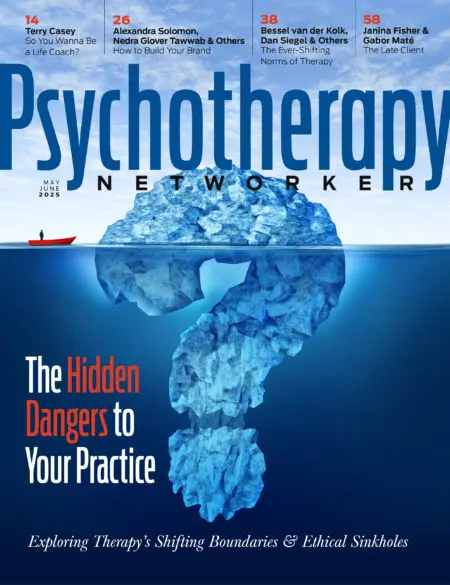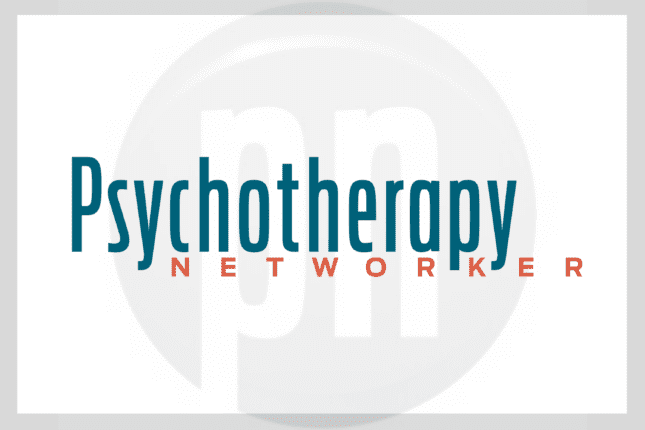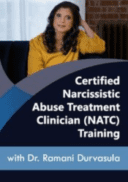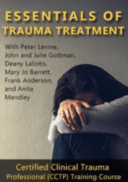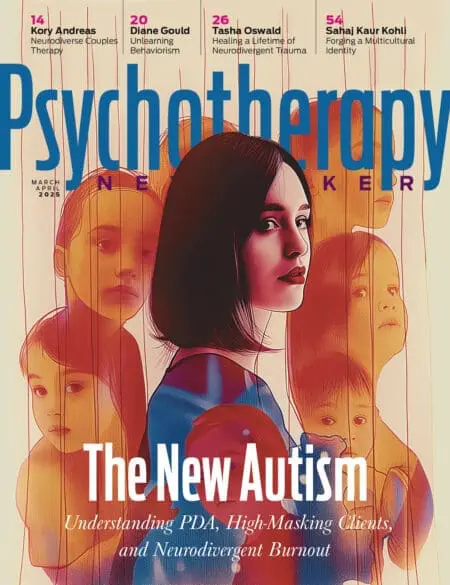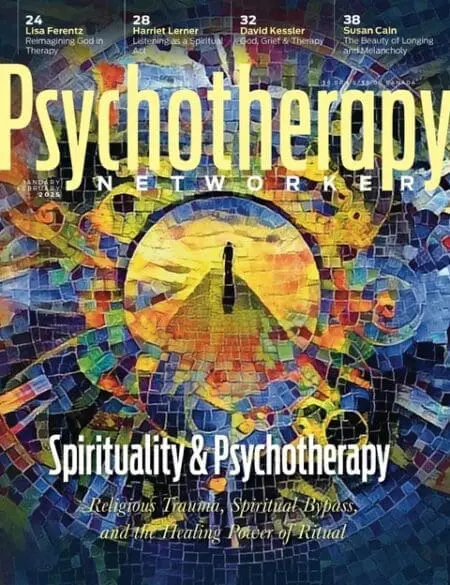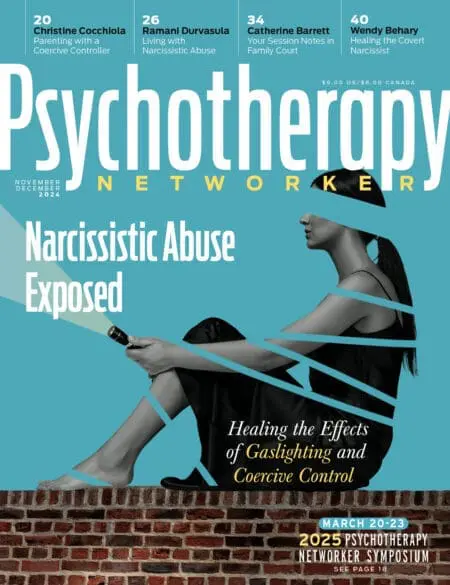From the July/August 1994 issue
THE PHRASE, “THE MELTING POT” ORIGINALLY CAME FROM THE title of a popular turn-of-the-century play that ended with the hero, a Jewish composer, and his gentile sweetheart overcoming family resistance to their marriage and holding hands against the backdrop of the Statue of Liberty. For at least the last century, intermarriage has embodied the great American Dream, the triumph of free choice and the pursuit of individual happiness over the constraints of ethnic and religious tradition. Some have even seen intermarriage as the ultimate means of overcoming the legacy of intractable divisions in our society. “The wedding notices in any newspaper testify to the increased equanimity with which people these days marry across ethnic lines, across religious lines, even, though to a smaller degree, across racial lines,” writes Arthur Schlesinger, Jr. in The Disuniting of America, his recent paean to the homogenizing power of a unified American culture. “The genius of America lies in its capacity to forge a single nation from people of remarkably diverse racial, religious and ethnic origins. The American creed envisages a nation composed of individuals making their own choices and accountable to themselves, not a nation based on inviolable ethnic communities.”
While the good liberal in me applauds this vision of society, there is something in it that bothers me. The ethnic communities that Schlesinger backhands are much more than barriers to individual fulfillment; they are the incubators of cultural plurality and the rich mix of identities in our multicultural society. “Culture” and “ethnicity” are not abstract concepts; they are the result of a complex outlook on life that has survived for centuries among people who share a history, a language, values and a desire to remain together. Endogamous marriage, i.e., marriage to others of the same culture, is the primary means any group has to maintain its identity beyond a single generation. Viewed in this light, intermarriage ceases to be an unmitigated boon to a democratic society and may be seen as something else an intransigent problem for any cultural minority that seeks to preserve a separate and distinct identity.
Jews comprise about two percent of the American population. As a committed Jew, I am painfully aware of the impact of religious intermarriage on the cultural group with which I most strongly identify. The most recent data show that more than 52 percent of all Jews who marry, marry non-Jews. These homes are significantly less Jewish-identified less than a third of the children of intermarriage will identify as Jewish and less than 10 percent will marry Jews. Considering that people who divorce are many times more likely to remarry outside their religion, and that the divorce rate among Jews who intermarry is twice as high as endogamous Jewish couples, it is apparent that the rate of intermarriage will continue to increase dramatically. These are the statistical foundations of the hyperbolic proclamation often heard in the Jewish community: “What Hitler didn’t accomplish in the Holocaust, American Jews themselves will achieve through intermarriage!”
For the past four years, as director of the Robert M. Beren Center at Yeshiva University, a clinic organized to help Jewish families confront the dilemmas of intermarriage, I have had to struggle with many difficult questions in trying to help families negotiate this very modern and very ancient minefield. I have repeatedly watched Jewish families self-destruct as parents disown their children and children cut off their parents. I have seen siblings and grandparents who find themselves caught in a web of conflicting values and loyalties.
As a clinician, I typically begin by asking the Jewish members of a couple considering intermarriage how important their Jewish identity is to them. If the answer is ‘Very,” then some difficult choices lie ahead both for them and for the non-Jewish partner. With parents whose children are intermarrying the question may be, “Can you imagine having a relationship with children and grandchildren who are less Jewish than you, or who may not even consider themselves Jewish at all?”
When a family or family member has difficulty with an intermarriage, I find that while a systems perspective often helps me appreciate both the impulse to intermarry and the family’s objection to it, it does not make the fundamental dilemma disappear what may be good for an individual may not, in the long run, be good for the family or the community. Intermarriage can trigger a real clash of values that no amount of reframing will obviate. This work has forced me to confront my strong personal feelings about my own Jewish identity and how it affects the family therapy I do. While I do not condemn those who choose to intermarry, I sometimes worry that my pro-Jewish sentiments will affect my ability to help those with less strong Jewish feelings. I don’t hide these sentiments, nor do I force them on clients or families. Ultimately, my goal is to help each family member deal with these difficult issues for him- or herself, and I feel better prepared to explore these questions with others if I have confronted them myself.
In my work with intermarried families, I follow Ivan Nagy’s principle of multi-directed partiality the importance of siding with everyone in the system at some point, at least internally, in order to understand their unique perspective. With intermarriage, this means understanding what it means to be in love, to find someone who is “just right” almost and the struggle that ensues in trying to decide how important that “almost” should be. It also means understanding the sentiments of parents who experience an intermarriage as a betrayal of everything Jewish, not just of them, but of their parents and ancestors through 4,000 years of Jewish history.
ABE AND DINAH CONTACTED ME from their home in Sacramento, California. They were living what, for them, was the American Jewish nightmare and they were desperate for advice. They described themselves as a typical Jewish family, perhaps somewhat more traditional than most, but still full participants in both the secular and religious communities. Last year, their oldest daughter moved to Albuquerque, began working at her first job since college, and started dating her employer who, much to her parents’ dismay, was not Jewish. Even though they could empathize with her loneliness and with the difficulty of meeting Jewish men where she lived, they strongly discouraged the relationship. They reminded her of their religious prohibitions against intermarriage, not to mention the practical difficulties of raising children in two faiths. Although they constantly urged her to break off the relationship, the couple only became more involved and soon announced their engagement. The fiance’s willingness to convert to Judaism would have assuaged most of their concerns, but he was adamantly opposed to it. The parents made one attempt to meet with the couple, but this proved to be such a disaster that there were no other meetings.
Wedding plans proceeded without the parents’ involvement. The daughter planned to be married in a church, by a minister. She understood her parents’ arguments against raising children in two faiths, and she was seriously considering converting to Christianity. The distraught parents wanted very much to go to her wedding, even if they didn’t approve of her choice of a partner, but they didn’t see how they could participate in helping their daughter become a non-Jew. Beyond that, they didn’t want to give their other two daughters any mixed messages about their disapproval of intermarriage. After several consultations with me and others in the community, including their rabbi, they made the difficult choice: they decided not to attend their daughter’s wedding. One sister attended, although she felt quite alienated from the whole process, while the other sister stayed home.
I saw my role as helping the parents to recognize both sides of their dilemma, and to see that either way, given their values, they would lose something. To go to the wedding and accept their daughter’s intermarriage and conversion would violate their values as Jewish people and a Jewish family. Not to go meant not accepting their daughter as the person she had chosen to become. While many secular people would be horrified by this couple’s decision not to attend their daughter’s wedding, not recognizing the vital issues at stake for these people would have been a serious clinical error on my part.
Intermarriage has torn this family apart. The parents no longer have any contact with their daughter and she makes no attempt to contact them. The parents’ identification as a Jewish family left no room for a daughter who rejected those strongly held values. Since this split, the parents have become more involved than ever before in their Jewish community, organizing conferences about intermarriage as well as planning educational and social programs. They hold Friday evening socials for young Jewish people at their home, trying to do for them what no one, they felt, had done for their daughter. In turning away from their daughter, they turned back toward the community she rejected.
I should emphasize that this family’s complete cut-off following an intermarriage is not typical. It is more common that a family experiences a gradual reconciliation over time parents adapt to a situation they never wanted, while their children learn to maintain their distance and do not broach certain topics, especially the question of how to celebrate religious holidays. Despite the sadness I felt for Abe and Dinah and their daughter, I came away with a grudging respect for both parties, who realized that they were involved in such a deep clash of values that no simple reconciliation would be possible. No matter how willing they had been to talk and compromise, the chasm that opened between them would almost invariably become greater in time. The parents’ pain at watching their daughter and her children participate in church life would have driven a wedge between the Jewish and non-Jewish sides of this family, and Abe and Dinah’s reactions undoubtedly would have placed an added emotional burden on their daughter’s marriage. Perhaps, in this case, the mutual recognition of their irreconcilable differences was ultimately the wisest path for everyone concerned.
ALL THERAPY INVOLVES DECISIONS about values. The clinical challenge for me is to recognize my values, be honest and open about them where appropriate, and, at the same time, enable clients to make the decisions that are best for them. This is the same challenge faced by a feminist therapist who is counseling a couple in a sexist relationship, or a Christian therapist counseling a couple considering abortion.
Psychoeducation is an important part of the work I do. I want couples considering intermarriage to know, for example, that there is a higher divorce rate among intermarried couples and a lower Jewish identity among their children. Yet, the meaning of these facts often is tied to the Jewish person’s feelings about his or her religion. If being Jewish is little more than bagels on Sunday morning, most of these considerations will have little impact. Clearly, the facts I have to offer are not neutral, and they buttress a position that holds that intermarriage can be difficult for people who wish to maintain a strong Jewish identity and a successful marriage. It is not my job to create a Jewish identity where there is none that is the work of rabbis but I do see it as my role to point out when people are not honestly dealing with themselves or to challenge the insistence that their Jewishness or the Jewish identity of their children will not be affected by their marriage to a non-Jew.
The changing importance of ethnicity and religion during the life cycle is an important theme in my work. While still in their twenties and thirties, when most intermarriages take place, many couples feel that religion is not important to either of them. As couples start raising a family, however, the role of religion in the family often changes. So, an issue that causes little friction for a young couple in their twenties can become a major battleground for a couple in their forties.
Dick and Denise were both children of difficult divorces. Dick’s family was an assimilated American-Jewish family; Denise was from a Polish-American working-class family. Neither felt especially connected to their ethnicity or their religion. They were married while in their twenties in a civil ceremony with few family members in attendance. They now have three children, the oldest is seven.
Like many intermarried couples, Dick and Denise have not chosen a primary religious identity for their family. Out of a sense of fairness to each other, neither wants to insist that the children be raised in one particular tradition. They plan to expose their children to both traditions, with some vague notion that the children will decide when they are older. As with many such families, they light Hanukkah candles and have a Christmas tree. They celebrate Passover with one side of the family and Easter with the other.
Such families get by with their decision not to decide, although they often experience difficulty at certain life-cycle stages. The birth of a child, especially a boy, often will create the first tension since the wedding: To circumcise or not to circumcise? In Dick and Denise’s case, a quick surgical procedure in the hospital immediately after the boys were born was their compromise solution. When the children reach the age where they begin to ask questions about God and religious affiliation, another decision must be made. Are the children sent to religious school, and if so, whose? I remember growing up with children who were the products of intermarriage; they spent every other year in Hebrew school, and alternate years in Catholic school. The question of affiliation and belonging is paramount to children at this age.
When I asked Dick and Denise’s 7-year-old daughter whether she celebrated Hanukkah or Christmas, she paused thoughtfully, then offered, “Both. I’m Christish.” While I had to admire her originality, not to mention her efforts at integration, I couldn’t help wondering what the future held for this child. After all, there are no “Christish” houses of worship, no “Christish” clergy and no “Christish” rituals. The research and common sense tell us that in all likelihood, this child will identify fully with neither religion. She will feel part of Schlesinger’s American culture, which, if the truth be told, is a Christian culture. Not to decide is to decide, because the default religion of America is Christian. Perhaps this is what most frightens the Jewish alarmists.
An intermarrying couple has only three choices: To adopt one or the other’s religion, to choose both religions, or to choose neither. The first choice may involve conversion, or it may not. If one spouse converts, this is no longer an intermarriage, and the research data on Jewish intermarriage indicates that most of the problems associated with intermarriage will disappear. From a developmental perspective, it seems that if a child is given a consistent message, he or she will develop a coherent ethnic and religious identity.
To choose both religions as in the case of the “Christish” girl seems to put the burden on the child. Perhaps as many as two-thirds of the children of intermarriage will consider themselves belonging to neither religion, while they will have been exposed to the basic principles of both.
For the parents, to choose neither religion avoids the difficult problem of choice, but may leave children feeling doubly displaced. They cannot call either tradition home, and may grow up feeling that religion is a burdensome dilemma. Thus, they grow up with an important piece of their cultural identity missing.
Many children of intermarriage often are pained to discover that some segments of the Jewish community don’t consider them Jewish, because, according to some Jewish practices, someone is only Jewish if the mother is Jewish. More important than Jewish law, however, is feeling unwelcomed by a community that tends to feel distrustful of outsiders. This nonacceptance sets up a cycle of distrust that often leads all but the most tenacious seekers to other religions, or to no religion at all.
As family therapists, we support an ideal that seeks to balance individual autonomy with familial interdependence. Yet, each side of this delicate equation involves sets of values that do not easily co-exist: independence vs. connectedness, free choice vs. adherence to tradition. This seems especially true in cases where individuals feel they must choose between a new partner and their family of origin.
As in the case of Abe and Dinah, the choices involved in intermarriage often have permanent ramifications that are painful no matter how they are resolved. Sometimes these choices involve unavoidable sacrifice and sadness; no simple rules exist for how to juggle values that may at times conflict. This is where therapists must muddle along with their clients, walk with them on the tightrope that sometimes distinguishes personal values from ethnic, community or family values.
THE CONFLICT BETWEEN THE individual’s freedom of choice and the survival of the community’s traditions has followed the Jews, like a dybbuk, for the past 350 years, as legal and social barriers to acceptance in Western culture have fallen. At a time when a recent Gallup poll indicated that more than 80 percent of Americans would consider Jewish in-laws desirable, the ancient prohibition against intermarriage is seen by many as the last barrier to complete Jewish assimilation into an all-too-accepting culture. Today, the sense of identity and affiliation that thousands of years of persecution helped preserve may evaporate in the great melting pot of a society in which religious distinctions seem to matter less and less. For Jewish families and the therapists called upon to help them, that is the ironic challenge that cannot be ignored.
Mark I. Sirkin, Ph.D., is the director of the Robert M. Beren Center at the Ferkauf Graduate School of Psychology and on the faculty of the Urban Institute for Families and Family Therapy at the Albert Einstein College of Medicine, both at Yeshiva University.
